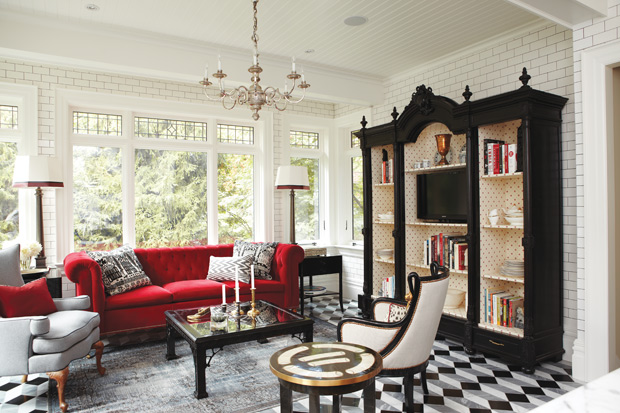Unexpected Red Theory in Interior Design: Why This Viral Trend Works and How to Use It
In the ever-evolving world of interior design, certain trends capture our collective imagination and invite us to see our spaces in a new light. One such trend that has recently gained momentum is the "Unexpected Red Theory." This concept suggests that incorporating an unanticipated splash of red into a room can elevate its aesthetic appeal, adding vibrancy and a focal point that enlivens the space.
Understanding the 'Unexpected Red Theory'
Why Red?
Implementing the Theory in Your Space
Incorporating the 'Unexpected Red' into your interior doesn't necessitate a complete overhaul. Here are some subtle yet effective ways to embrace this trend:
-
Accent Furniture: Introduce a red armchair, ottoman, or side table into a room dominated by neutral or monochromatic tones. This singular piece can serve as a statement without overwhelming the existing decor.
-
Art and Decor: Hang artwork that features red elements or place decorative items like vases, lamps, or cushions in shades of red. These smaller accents can punctuate the space with color and interest.
-
Textiles: Incorporate red through textiles such as throw blankets, rugs, or curtains. These additions can add warmth and texture while adhering to the 'unexpected' aspect of the theory.
Balancing Act
While the 'Unexpected Red Theory' encourages boldness, balance is key. The red element should complement, not clash with, the existing color palette. It's advisable to use red sparingly to maintain harmony and prevent the space from feeling too intense. Designer Sophie Robinson cautions that "you can’t just add red to any room – it’s just not that simple. It can look jarring."
Trends like the 'Unexpected Red Theory' remind us of the playful and experimental nature of interior design. They encourage us to step out of our comfort zones and view our spaces through a fresh lens. Whether you're a design enthusiast or simply looking to refresh your home, consider adding that unexpected touch of red—you might be surprised at the transformation it brings.
At Livin Interiors, we celebrate the dynamic landscape of design trends and enjoy sharing insights that inspire and inform. Stay tuned for more explorations into the fascinating world of interior design.
Livin Interiors Facebook YouTube Instagram LinkedIn
Image creadit: https:houseandhome.com



Comments
Post a Comment